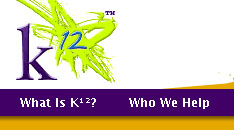 The New York Times has a fascinating story today about “cyber charters,” a phenomenon I probably should have heard about before but haven’t. I’m still not exactly sure what they are, but as near as I can tell it’s basically a way of home schooling your kids using online lessons instead of books. The Times piece is about CAVA, a virtual academy that’s a subsidiary of K12 Inc., which provides the online curriculum. Unlike ordinary home schools, however, CAVA is certified by the state of California and therefore gets paid as much per student as an ordinary bricks-and-mortar school. So where does all this money go?
The New York Times has a fascinating story today about “cyber charters,” a phenomenon I probably should have heard about before but haven’t. I’m still not exactly sure what they are, but as near as I can tell it’s basically a way of home schooling your kids using online lessons instead of books. The Times piece is about CAVA, a virtual academy that’s a subsidiary of K12 Inc., which provides the online curriculum. Unlike ordinary home schools, however, CAVA is certified by the state of California and therefore gets paid as much per student as an ordinary bricks-and-mortar school. So where does all this money go?
“A virtual education is expensive,” said Katrina Abston, the head of schools for CAVA, and a K12 employee. The nine K12 California schools share the cost of a 10,000-square-foot office and storage space in Simi Valley. “There’s back-end support and computers and the type of curriculum we use is expensive,” Ms. Abston said. “They make sure we’re cutting edge.”
Luis Huerta, an associate professor of education at Columbia University, is suspicious:
“Nationally, cyber charters on average receive the equivalent amount of funding as traditional schools,” Professor Huerta said. He added that there was minimal overhead and minimal accountability. If virtual charter school costs are lower, Professor Huerta said, “then where is the money going?”
“It doesn’t add up,” he said.
Well, maybe not. But K12 isn’t wildly profitable, so they’re spending it on something. More here.


















